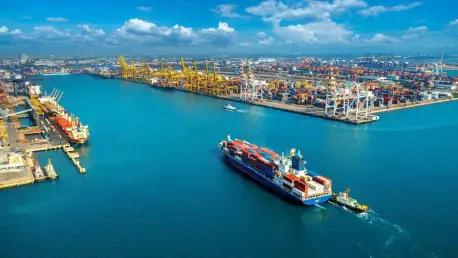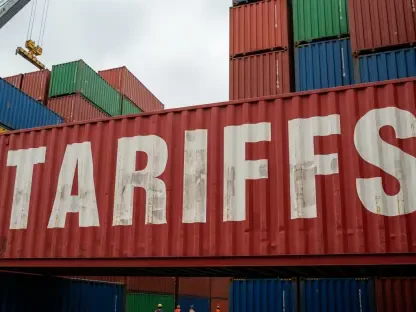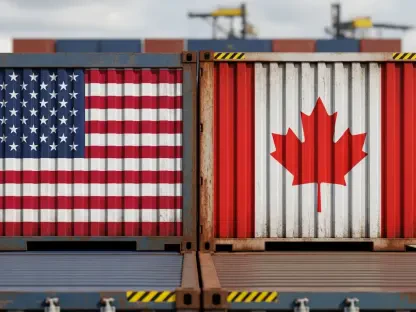The shipping industry, a vital component of global trade, is currently navigating a fraught landscape marked by geopolitical tensions and trade uncertainties. Two influential shipping carriers, Hapag-Lloyd and Ocean Network Express (ONE), have been closely monitoring how these tensions impact their financial outcomes. Both companies kicked off the year with robust demand, partly fueled by anticipatory actions in response to potential tariff implementations. However, they face considerable challenges owing to the unpredictable nature of global trade policies, particularly those emanating from the United States, which significantly influence the overall market equilibrium.
Economic Projections Amid Geopolitical Tensions
Hapag-Lloyd has reported a promising start to their fiscal year with Q1 earnings rising by 17%, translating to $1.1 billion amid revenues of $5.3 billion. Despite these encouraging figures, the company has maintained a cautious outlook for the remainder of the year, citing rising geopolitical tensions and volatile freight rates as key concerns. The backdrop of US-imposed tariffs also adds complexity, especially given that 22% of global container traffic is US-driven. This scenario has already led to the cancellation of one-third of shipments headed to the United States and a notable reduction in trans-Pacific shipping capacity. Such developments have forced Hapag-Lloyd to predict a more conservative EBITDA range between $2.5 billion and $4 billion for the year ahead.
Meanwhile, ONE has also shared a tempered outlook, anticipating that their profits may dwindle by up to 75% even as they navigate geopolitical disturbances. The company has observed weaknesses in traditional east-west maritime routes and emerging concerns tied to regional political dynamics, which are poised to shape their bottom line adversarially. In response, ONE is reinforcing its strategic pivots towards expanding services and fortifying alliances, underscoring their enduring commitment to enhancing quality, efficiency, and decarbonization efforts. Yet, facing these economic headwinds necessitates a continual evaluation of market conditions and adaptive strategic planning.
Strategic Responses and Future Directions
Hapag-Lloyd’s strategic posture involves meticulous cost management and the expansion of terminal facilities across Europe, coupled with operational growth in France, India, and the United States. These initiatives are part of a broader vision to strengthen their global footprint amidst uncertain financial climates. The company understands that while the present may offer obstacles, preparing for the future remains imperative. Despite the backdrop of this cloudy economic outlook, Hapag-Lloyd remains resolute in pursuing sustainable growth strategies anchored on resilience and adaptability.
Similarly, ONE is doubling down on its commitment to quality and innovative solutions while focusing on decarbonization as a pivotal element of its forward-looking approach. By expanding its service roster and deepening partnerships, the company aims to offset the negative impact of geopolitical tensions by actively reshaping its market offerings. This strategic flexibility reflects a broader industry consensus on the necessity of agility in the face of economic uncertainties. Both shipping companies express the importance of adapting to evolving circumstances to mitigate the fiscal impact of impending tariffs and geopolitical volatilities, ultimately shaping a consensus of cautious optimism regarding the market’s performance.
Navigating a Clouded Future
The shipping industry, a key element of global commerce, is currently facing a complex scenario due to geopolitical strains and trade uncertainties. Key players such as Hapag-Lloyd and Ocean Network Express (ONE) are scrutinizing these tensions, assessing their impact on financial results. Initially, both firms saw strong demand, partly triggered by proactive measures in anticipation of possible tariff changes. This surge was shaped by global trade dynamics. However, these shipping giants are now encountering substantial hurdles due to the unpredictable nature of international trade policies, particularly those emerging from the United States. U.S. policy decisions have a profound capacity to sway global market balance, keeping industry leaders on edge and requiring them to adapt swiftly. Navigating these waters requires an agile approach, reinforcing the importance of strategy in dealing with fluctuating economic landscapes that ripple through the shipping sector, affecting operations and profitability worldwide.









